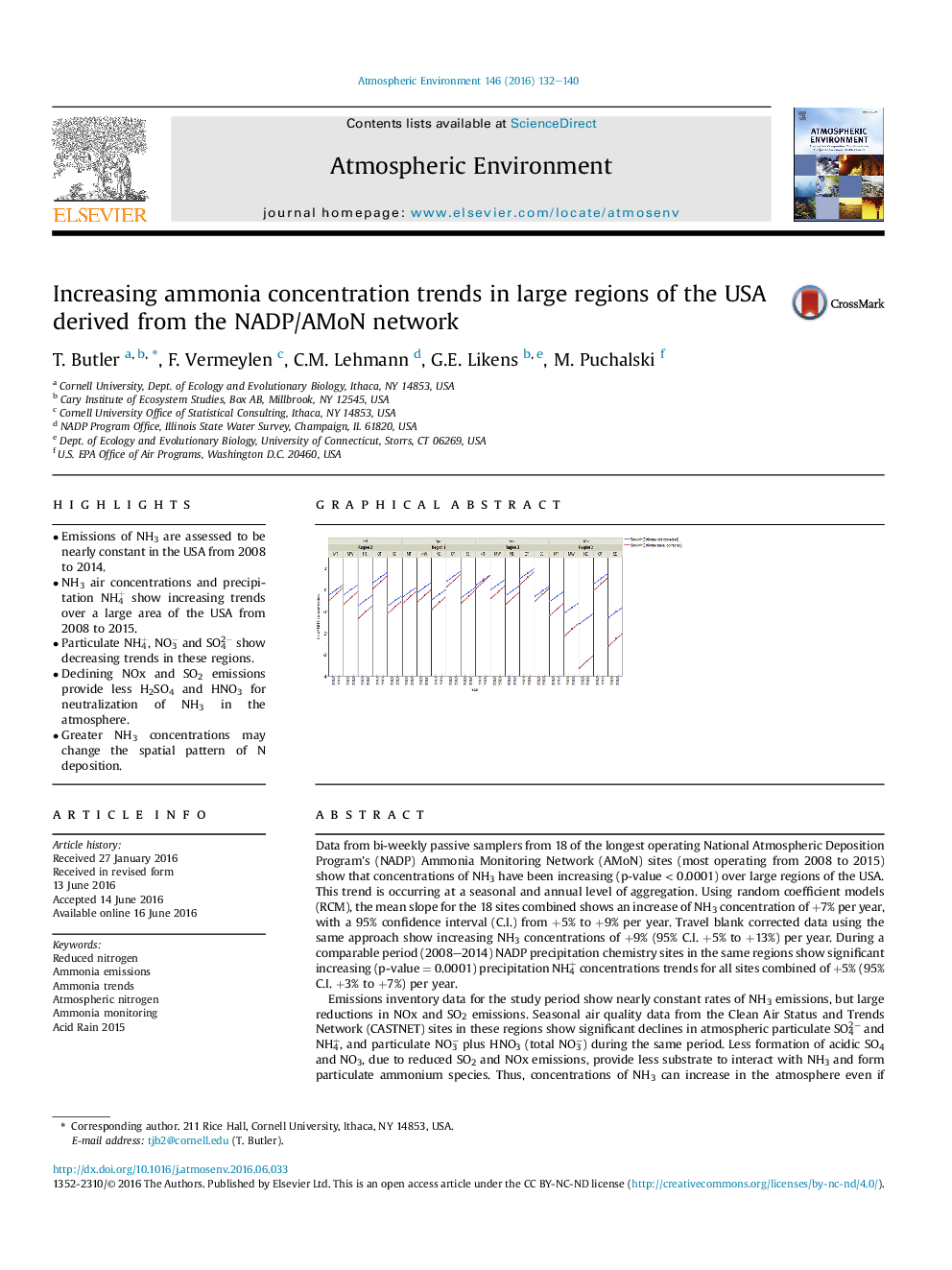| Article ID | Journal | Published Year | Pages | File Type |
|---|---|---|---|---|
| 5753268 | Atmospheric Environment | 2016 | 9 Pages |
â¢Emissions of NH3 are assessed to be nearly constant in the USA from 2008 to 2014.â¢NH3 air concentrations and precipitation NH4+ show increasing trends over a large area of the USA from 2008 to 2015.â¢Particulate NH4+, NO3â and SO42â show decreasing trends in these regions.â¢Declining NOx and SO2 emissions provide less H2SO4 and HNO3 for neutralization of NH3 in the atmosphere.â¢Greater NH3 concentrations may change the spatial pattern of N deposition.
Data from bi-weekly passive samplers from 18 of the longest operating National Atmospheric Deposition Program's (NADP) Ammonia Monitoring Network (AMoN) sites (most operating from 2008 to 2015) show that concentrations of NH3 have been increasing (p-value < 0.0001) over large regions of the USA. This trend is occurring at a seasonal and annual level of aggregation. Using random coefficient models (RCM), the mean slope for the 18 sites combined shows an increase of NH3 concentration of +7% per year, with a 95% confidence interval (C.I.) from +5% to +9% per year. Travel blank corrected data using the same approach show increasing NH3 concentrations of +9% (95% C.I. +5% to +13%) per year. During a comparable period (2008-2014) NADP precipitation chemistry sites in the same regions show significant increasing (p-value = 0.0001) precipitation NH4+ concentrations trends for all sites combined of +5% (95% C.I. +3% to +7%) per year.Emissions inventory data for the study period show nearly constant rates of NH3 emissions, but large reductions in NOx and SO2 emissions. Seasonal air quality data from the Clean Air Status and Trends Network (CASTNET) sites in these regions show significant declines in atmospheric particulate SO42â and NH4+, and particulate NO3â plus HNO3 (total NO3â) during the same period. Less formation of acidic SO4 and NO3, due to reduced SO2 and NOx emissions, provide less substrate to interact with NH3 and form particulate ammonium species. Thus, concentrations of NH3 can increase in the atmosphere even if emissions remain constant. A likely result may be more localized deposition of NH3, as opposed to the more long-range transport and deposition of ammonium nitrate (NH4NO3) and sulfate (NH4)2SO4). Additionally, the spatial distribution of wet and dry acidic deposition will be impacted.
Graphical abstractSeasonal regressions of log-transformed NH3 concentrations (μg NH3/m3) for USA regions (MT = mountain (west), MW = midwest, NE = northeast, OT = Oklahoma - Texas, SE = southeast) 2008 to 2015. On the x-axis all years, 2008 to 2015 are represented, but are not displayed, for each region and season. The upper (blue) regression lines are for the ambient NH3 concentration data and the lower (red) regression lines are the travel blank corrected NH3 concentration data.Download high-res image (235KB)Download full-size image
